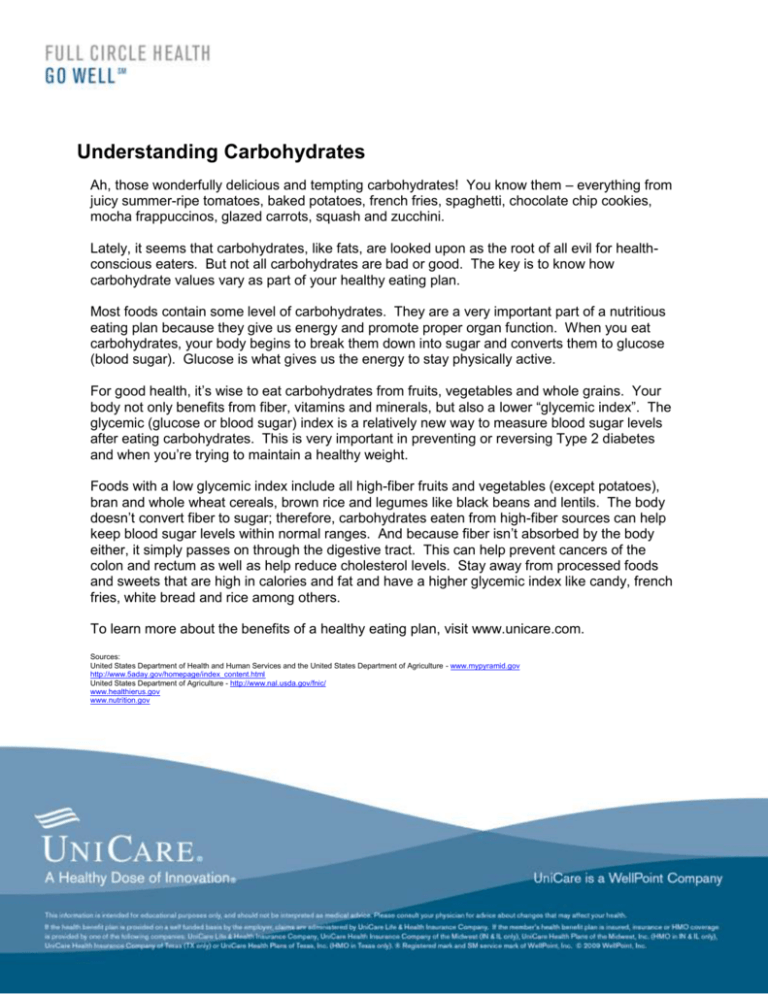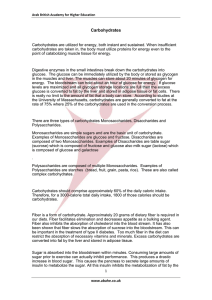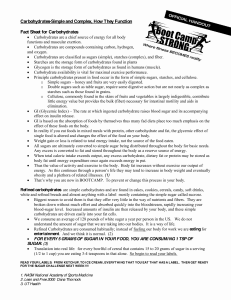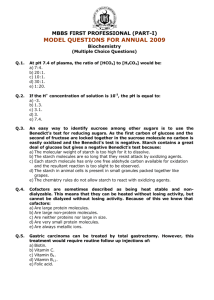Understanding Carbohydrates
advertisement

Understanding Carbohydrates Ah, those wonderfully delicious and tempting carbohydrates! You know them – everything from juicy summer-ripe tomatoes, baked potatoes, french fries, spaghetti, chocolate chip cookies, mocha frappuccinos, glazed carrots, squash and zucchini. Lately, it seems that carbohydrates, like fats, are looked upon as the root of all evil for healthconscious eaters. But not all carbohydrates are bad or good. The key is to know how carbohydrate values vary as part of your healthy eating plan. Most foods contain some level of carbohydrates. They are a very important part of a nutritious eating plan because they give us energy and promote proper organ function. When you eat carbohydrates, your body begins to break them down into sugar and converts them to glucose (blood sugar). Glucose is what gives us the energy to stay physically active. For good health, it’s wise to eat carbohydrates from fruits, vegetables and whole grains. Your body not only benefits from fiber, vitamins and minerals, but also a lower “glycemic index”. The glycemic (glucose or blood sugar) index is a relatively new way to measure blood sugar levels after eating carbohydrates. This is very important in preventing or reversing Type 2 diabetes and when you’re trying to maintain a healthy weight. Foods with a low glycemic index include all high-fiber fruits and vegetables (except potatoes), bran and whole wheat cereals, brown rice and legumes like black beans and lentils. The body doesn’t convert fiber to sugar; therefore, carbohydrates eaten from high-fiber sources can help keep blood sugar levels within normal ranges. And because fiber isn’t absorbed by the body either, it simply passes on through the digestive tract. This can help prevent cancers of the colon and rectum as well as help reduce cholesterol levels. Stay away from processed foods and sweets that are high in calories and fat and have a higher glycemic index like candy, french fries, white bread and rice among others. To learn more about the benefits of a healthy eating plan, visit www.unicare.com. Sources: United States Department of Health and Human Services and the United States Department of Agriculture - www.mypyramid.gov http://www.5aday.gov/homepage/index_content.html United States Department of Agriculture - http://www.nal.usda.gov/fnic/ www.healthierus.gov www.nutrition.gov











